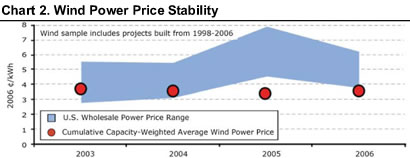Lifted
to the sky in summer 2010 the Red Hill Breezy
5.5 is the first large scale wind turbine
built by Red Hill General Store.
This page contains the history and up to
date information of the Red Hill Breezy
5.5 wind turbine. Pictures begin with the
construction, placement, and liftoff of
the wind turbine.
“The answer, my friend, is blowin'
in the wind, The answer is blowin' in the
wind”
- Bob Dylan
WHAT
IS WIND ENERGY?
Wind power is a truly clean energy source
that can be relied on for the long-term
future. A wind turbine creates reliable,
cost-effective, pollution free energy. It
is affordable, clean and sustainable. One
wind turbine like ours can be sufficient
to generate energy for a household. A few
larger ones would power all the homes in
our community.
WHERE CAN WE BUILD TURBINES?
Wind Turbine can be installed almost anywhere.
Getting a wind turbine depends entirely
on the amount of wind generated in your
area. The first thing you need to do is
to find out the average speed in your area.
The average wind speed is typically measured
on a scale from 1-5 and needs to be a 3
or above to make installing a wind turbine
worthwhile. Ideal locations for wind Turbine
are in the country, on farms, or on the
coast: basically anywhere away from built-up
areas. The more buildings around the wind
turbine, the less wind there is. For every
increase in windspeed there is a 3times
increase on energy output - so windturbines
must be built where the wind blows best!
HOW
MUCH POWER CAN WE GET FROM THE WIND?
That's entirely dependent on the swept area
of the blades and the detailed characteristics
of the turbine. Nevertheless, It begins
with understanding the predictable power
in the wind itself.
IMPORTANT
ECONOMICS AND TURBINE EFFICIENCY
Power is generated
by wind speeds sufficient to run a turbine.
The economic cost competitiveness accounts
for wind's intermittence - with capacity
factors at about 30% (the same as traditional
coal plant efficiency) - All wind calculations
for power output account for the fact the
wind dosen't blow equally throughout the
seasons. Thus, assuming real power production
potential. Newer
wind generation is cost-competative with
conventional sources shown in Chart 2 (Randolph,
2008, p. 463).

Wind turbines have no fuel cost and relatively
low operating costs allowing confident prediction
of energy costs years into the future (Rynne
et al. 2011).
SUBSIDIES
Un-level Playing Field: Energy incentives
for oil and gas are permanent and have been
in place since the 1920s. U.S. subsidies
for oil, natural gas and coal totaled over
$500 billion from 1950 to 2006. Wind energy’s
primary incentive, the Production Tax Credit
(PTC), has been allowed to expire multiple
times, including in 1999, 2001 and 2003
and has been consistently reinstated for
only one or two year terms.
Lantz, E., Flowers, L., Rynne, S., &
Heller, E. (2011). Planning for Wind Energy.
American Planning Association.
Randolph, J. (2008). Energy for Sustainability
. Washington DC: Island Press.